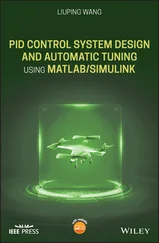LC record available at https://lccn.loc.gov/2019057875
LC ebook record available at https://lccn.loc.gov/2019057876
Cover Design: Wiley
Cover Images: © imaginima/Getty Images, © gremlin/Getty Images
The increasing multiplicity of data gathering from living systems both in volume and modalities provides a wealth of information. From a usefulness perspective it becomes imperative to understand the mechanisms of such systems where the information is kept and processed efficiently and robustly. These mechanisms are, by and large, highly complex and exquisite and require effective and robust sensors and sensor networks for data collection, and specific frameworks for communication and processing.
Sensors and sensor networks are perhaps the most dominating and fast-growing areas of research and development nowadays and cover a vast range of applications from automation to medication. New technologies make available new sensors on a continual basis, while more advanced mobile and stationary computing platforms become available to cater for better and faster recording, archiving, mining, processing, and recognition of the data of various modalities.
Over the past decade miniaturised wearable devices, particularly those embedded within mobile systems such as handphones, have attracted considerable interest. Such devices allow for the measurement of physical, behavioural, and physiological information from the human body mainly for monitoring patients, athletes, drivers, and many others.
The multiplicity of body (and area) sensors and their functionalities have rendered the area a highly significant research topic and, of course, raised more questions to be answered and problems to be solved. This area of research became even more fascinating when the captured data are to be transferred to other parties, such as hospitals, remotely and through the existing wireless communication media. As a result, wireless body sensor networking and the associated wearable technologies have marked another peak in living systems, in particular for human monitoring, and have fuelled further enthusiasm for solving many more problems.
Current research and applications in body sensor networking include monitoring the patients outside hospitals, assistive technology, hazard prevention for drivers and pilots, multiparty gaming, and enhancing the ability of the athletes. These applications have great impact on daily human life.
Sensor design is a pivotal problem to be tackled by the researchers in this domain. In-body, on-body, and off-body sensors are designed for different applications. The sensors have different sizes, technologies, power requirements, and communication modalities. The information captured by these sensors may have different qualities in terms of noise, interference, and strength. Suitable hardware and software platforms enable effective ways to access and communicate (mostly wireless) the sensor data.
Scientists need to make sense of the received data. They need to be able to combine (or fuse) the data from different sensors, to extract the required diagnostic information from the data, to diagnose any specific health-related problems, and to make the necessary decisions. This interactive framework of actions requires to a great extent research into signal processing and machine learning. Fortunately, many of the advanced signal processing algorithms – especially those designed for processing biomedical signals, artefact removal, or learning from the data – can be applied to the sensor data. In addition, both centralised and distributive signal processing techniques widely developed for other applications can be exploited and deployed to the aggregated information from the sensors.
Efficient communication of data across a network has also become a significant research area, owing to the complexity of communication channel. Human movement, change in the environment, noise, interference, data traffic, temperature, humidity, tolerable data rates by the sensors, number of network segments or hubs, and the on-board or remote processing systems significantly affect the complexity of the communication channel. As a result, standard physical, link (MAC), and network layers need to be modified to better cater for such applications. For this purpose a number of new routing algorithms have been introduced to optimise the flow of information for different networks in different scenarios.
In applications where the sensors need long-lasting power supplies, such as in-body sensors, the problem of energy harvesting becomes crucial. Hence, researchers have become sensitive to such potential limitations which need to be taken into consideration for future development. Energy sources from biochemical or even metabolic reactions, movement, and heat have already been utilised for some wireless sensor networks. These are becoming applicable to body sensor networks, too. Currently, body movement and heat appear to be the two major sources for energy harvesting with applications to body sensor networks.
Last, but not least, the security of human information is vital, and therefore effective measures towards protecting such data need to be taken. This becomes even more crucial when the data are to be transferred over the Internet or public cloud. Both, data security, through the encryption of the data, and network security, through effective authentication, have to be in place for all types of human-related information.
We decided to write this book when we came together in Beijing, China, for the 21st Conference on Digital Signal Processing, in 2016. At that time, a couple of editorials and reviews on wireless sensor networks had been produced. Thus, the need for a coherent monograph was very evident. To fulfil such a requirement, in this monograph we try to provide some food for thought on almost all the different areas of research related to body sensor networks.
The authors wish to acknowledge the help and dedication of Ahmadreza Hosseini-Yazdi, Ales Prochazka, Andrew Pierson, Funminiyi Olajide, and Samaneh Kouchaki for their help in the provision of materials, proofreading, and constructive comments and advice throughout the preparation of this book. We also thank Sara Sanei for her help in typing and organising the materials.
Saeid Sanei, Anthony G. Constantinides and Delaram Jarchi
About the Companion Website
This book is accompanied by a companion website:
www.wiley.com/go/sanei/algorithm-design 
The website includes:
Software codes
Videos
Colour images
A list of links to access data banks
Scan this QR code to visit the companion web site:

1 Introduction
1.1 History of Wearable Technology
Earlier in history, it would take hundreds of years between breakthroughs such as eyeglasses being developed in 1286 and the abacus ring being manufactured in 1600. Today, new wearable tech innovations happen on a monthly basis, if not weekly. In the last 10 years, we have had the Google Glass, Fitbit, Oculus Rift, and countless others.
The Nuremberg egg manufactured in 1510 by Peter Henlein was one of the early portable mechanical timekeeping devices (like a watch) which had a chain to hang over the neck. An air-conditioned top hat was a wearable designed by a Victorian in the nineteenth century. In 1890, a lighting company in New York used to send girls with wearable lights onto the performance stage and to light up houses during ceremonies. In the1960s, the wearers of roulette shoes, created by Edward Thorp and Claude Shannon, used to observe the rotations of the roulette ball, tap the shoe accordingly, and then receive a vibration telling them which number to bet on. In 1963, a small portable TV screen was worn as a glass. The aviator Alberto Santos-Dumont pioneered the use of the wristwatch in 1904 as it allowed him to have his hands free while flying. This also led people to start using wristwatches. Calculator watches came onto market in 1975 and the first low-cost Walkman stereo was offered by Sony in 1979. In the 1990s, interest in the Internet of Things (IoT) started to rise. In December 1994, Steve Mann, a Canadian researcher, developed the wearable wireless Webcam. Despite its bulk, it paved the way for future IoT technologies. This required advances in artificial intelligence, which started to flourish in the 2000s.
Читать дальше














